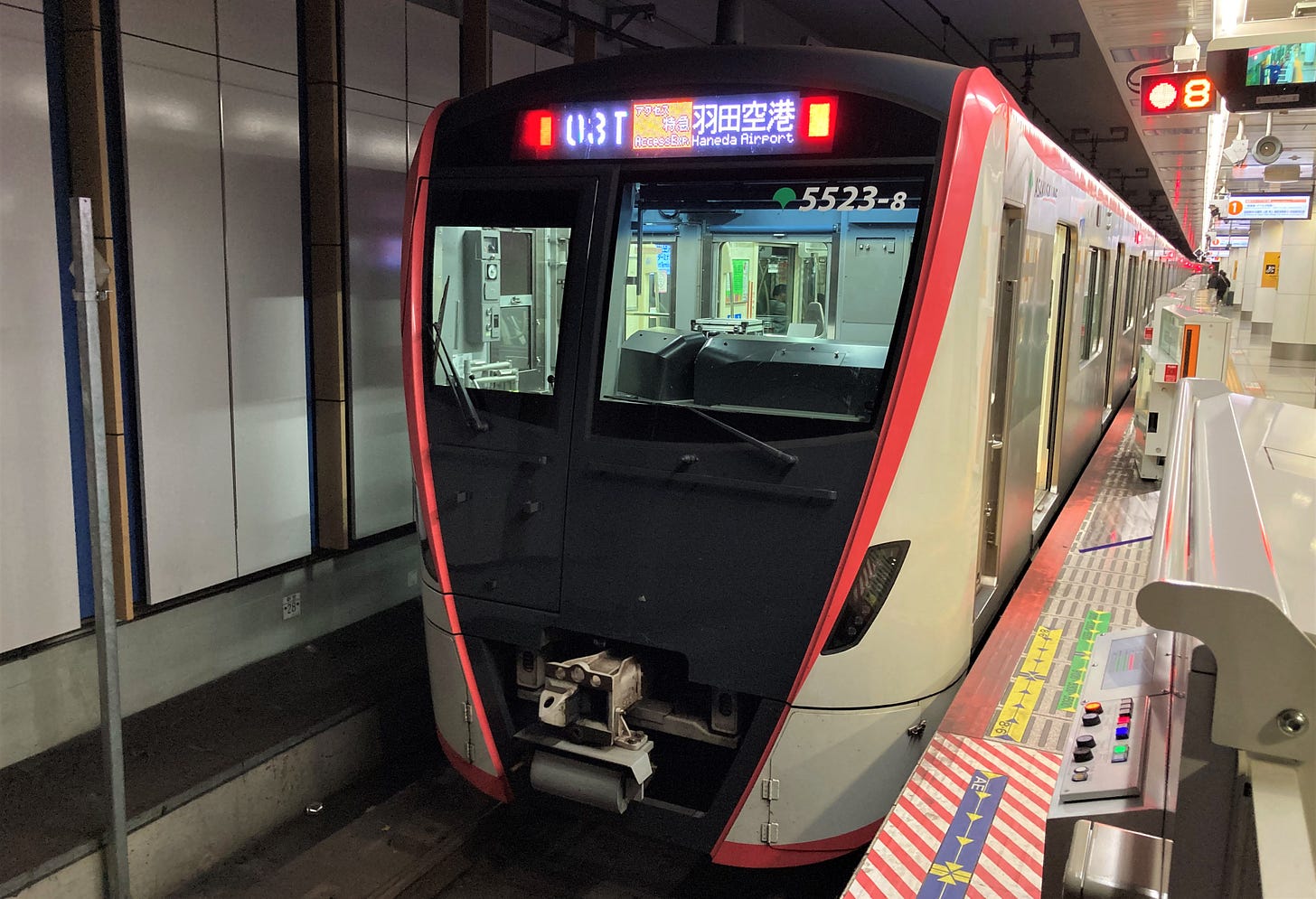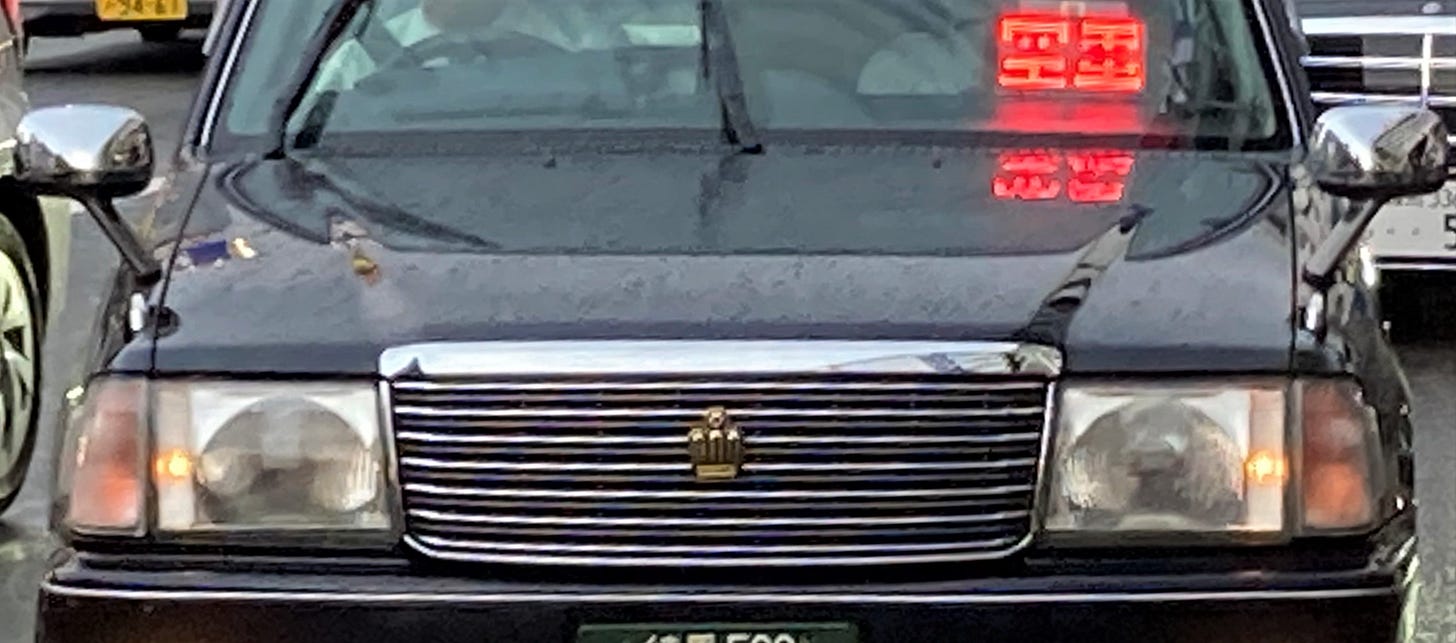#139 The Best Access from Narita Airport
From Narita Airport to your hotel, your choices determine your fatigue level.
How nervous are you about which airport arrival flight to take when visiting Tokyo, Narita, or Haneda? It depends on the flight time and the time of arrival, and with airlines such as Singapore Airlines that offer multiple flights per day, there may be a difference in fares. Last week, I considered the most straightforward access to central Tokyo from Haneda Airport, and this week, I would like to examine access from Narita Airport. As for Narita Airport, there are many differing opinions about its convenience due to its distance and time to the center of Tokyo. If you have chosen Narita Airport, I hope this post will help!

Narita Airport opened in 1978 under the name "New Tokyo International Airport" and was renamed "Narita Airport" in 2004 when it was privatized. I was a high school student when I made my first overseas trip to the US in 1979, and I clearly remember the shiny new Narita Airport Terminal, which is currently Terminal 1. The year 1978 saw the opening of a new airport at Narita, and at the same time, international flights from Haneda Airport were relocated to Narita. Looking back on this history, I am amazed at the number of flights departing from and arriving at Narita and Haneda Airports.
Let me cut to the chase. Narita Airport is about 60 km from central Tokyo in a straight line. The primary access to the city center is by train on the JR East and Keisei lines and by highway bus. Cabs are the easiest way to get to your hotel, but the distance between the airport and the city center naturally makes the fare more expensive. Arranging for a large limousine would cost at least 25,000 yen. Let's take a look at each of these options one by one.
Railroads
Railroads can roughly be divided into two types: the Narita Express, operated by the JR Line, and the Access Express, operated by the Keisei Line, directly connecting to the Toei Asakusa Line. The main route on the Keisei Line includes the Skyliner, which runs between Narita Airport and Nippori, a transfer station on the JR Line, in 36 minutes. However, depending on the hotel's location, the Access Express is more convenient.
Narita Express
Narita Express is an all-seat reserved limited express train operated by JR East, stopping at Tokyo, Shinagawa, Shibuya, Shinjuku, and Yokohama. There is a discount round-trip ticket of 5,000 yen for a stay of 14 days or less. Since the fare is flat, it is highly economical if you are going to Yokohama.
Access Express
From Narita Airport, it follows the route of the Hokuso Koukan Line and joins the Keisei Main Line at Keisei Takasago. From Oshiage, the train enters the Toei Asakusa Line, taking the Nihonbashi, Higashi-Ginza, Shimbashi, and Shinagawa routes. Although it takes a little longer, it is very convenient as it connects directly to the subway station in the center of Tokyo. Please take a look at last week's post for major hotels.
Keisei Main Line
The Keisei Main Line terminal station is Keisei Ueno, located between JR Okachimachi and Ueno Stations. The Skyliner is the most efficient way to get around Okachimachi Station, which I mentioned last week.
Highway Bus
The basic premise of choosing a highway bus is that the Metropolitan Expressway is heavily congested depending on the time of day, so if there is an accident, the time required for the trip will vary greatly. The time may vary from 30 minutes to an hour, depending on traffic congestion. Also, the morning commute takes more time than usual. Therefore, it is better to take the train if you do not want to be in traffic jams. Please visit my post from last week for more details on highway bus destinations.

Advantages
However, the advantage of the express bus is that it can take you to major terminal stations in Tokyo without transfers, even though traffic jams make the time unpredictable. Also, like Haneda Airport, express buses can take you directly to some of the larger hotels, so it is a matter of which advantage you take. Fares are more expensive than trains.
Disadvantages
Buses have longer expressway sections, so the time required is more variable than at Haneda Airport. Another drawback is that fares are higher than for trains. When I return to the city center from overseas, I often take the train because the time required is unclear.
Shuttle from Narita Airport to Tokyo Station
Suppose you want to transfer to the Shinkansen or get to Tokyo Station on the same day. In that case, the express buses connecting Tokyo Station and Narita Airport, which run once every 10 minutes during peak hours, are convenient. You can just take the available bus without worrying about the bus time. At Tokyo Station, the bus arrives at the Nihonbashi Exit on the Kanda Station side, requiring a short trip through Tokyo Station. Conversely, the Nihonbashi exit is convenient if you use Otemachi on the Tokyo Metro.
A New Option
Willer Express will begin service on March 1 on a new route to and from Shinkiba, which will serve as the gateway to Tokyo from Narita Airport. Shinkiba is less affected by traffic congestion on the Metropolitan Expressway, and the JR Line and Tokyo Metro Yurakucho Line provide easy access to central Tokyo. The following are accessible via Shinkiba Station transfers. Tokyo, Toyosu, Ginza, Nagatacho (Akasaka), and Ikebukuro. The fare is 1,400 yen. It will be a new option for those who prefer to travel on time. For Willer’s English page, please go to this site.
Combination with Taxis
As @tokyounfolded commented in the previous article, it is practical to use a train or bus to the terminal station and then a cab to the hotel at the final destination. However, please note that the group should be up to three people, and if there are more than three people in the group, one cab will not be able to accommodate them when combined with their suitcases. Black Cabs, now common throughout Japan, have wider seating areas but less space for luggage, so be careful if you have large suitcases. Tokyo Station and Shinjuku Station are the easiest locations to use in combination with cabs. This is because of the line flow from the station ticket gates to the cab stand.
Finally
When you arrive at Narita Airport, you must prepare to spend about an hour to get to central Tokyo, 36 minutes by Keisei Skyliner and 55 minutes by Narita Express. After a long flight, you should avoid traffic jams with buses.
If I were you, I would take the Narita Express for a smooth ride to Tokyo or Shinjuku and then take a cab option to my hotel. Alternatively, although it would reduce hotel options, I would take the Skyliner to Keisei Ueno and look for a hotel within walking distance. The location would be in the Okachimachi Station area, and it would be convenient to use the Ginza Line for sightseeing the next day and beyond. Please look at my previous post if you want to use the Ginza Line, even though it is a paid article.
Although arriving at and departing from Narita Airport tends to be complicated in many ways in that the airport is far away, if you decide on the locations I have given you here, you will naturally decide on a hotel location depending on the time of arrival. The hotel you stay at will depend on whether it is convenient for sightseeing during your stay, as well as the location of restaurants and places to procure food. I would like to talk about the hotel's location from a different perspective, such as regarding restaurants and food supply soon.










Maybe doing subway passes and their different combos would be of interest? What is the cheapest all access (JR and all other lines) pass for 3,5,7 days etc for Tokyo and Osaka?